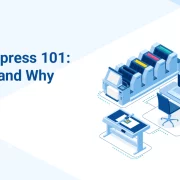Robotic Process Automation (RPA) refers to a technology that automates repetitive, routine, and high-volume tasks that were previously handled by humans. Typically, RPA utilizes software robots, also known as bots, to perform tasks such as data entry, process transactions, and interact with multiple systems and applications. The primary objective of RPA is to increase operational efficiency, minimize errors, and reduce operational costs. Its potential applications span across a variety of industries and departments, including finance, human resources, customer service, and procurement. RPA is designed to complement, not substitute, human workers, enabling them to focus on higher-value tasks.
Q: What is Robotic Process Automation (RPA)?
A: RPA is a technique that automates routine, rule-based processes using software robots (bots). By engaging with applications and systems in a similar fashion to how people do, the bots imitate human behavior.
Q: What are the benefits of using RPA?
A: RPA has a number of advantages, including increased productivity and efficiency, better accuracy and quality, lower costs, and higher customer satisfaction.
Q: What types of tasks can be automated using RPA?
A: Many operations, including data entry, data extraction, data processing, report preparation, and customer service, can be automated with RPA.
Q: What is the difference between RPA and AI?
A: Whereas AI (Artificial Intelligence) is focused on imitating human intellect, such as natural language processing, image recognition, and decision making, RPA is focused on automating repetitive, rule-based operations.
Q: What are the key components of RPA?
A: The key components of Robotic Process Automation (RPA) include:
- Bots – Software programs that execute automated tasks based on predefined rules.
- Development Studio – The environment where bots are designed, configured, and tested.
- Control Room – A centralized platform that manages, monitors, and deploys bots across workflows.
These components work together to streamline operations by automating repetitive tasks, improving accuracy, and enhancing efficiency. With proper configuration and oversight, RPA enables businesses to optimize productivity and reduce manual effort.




